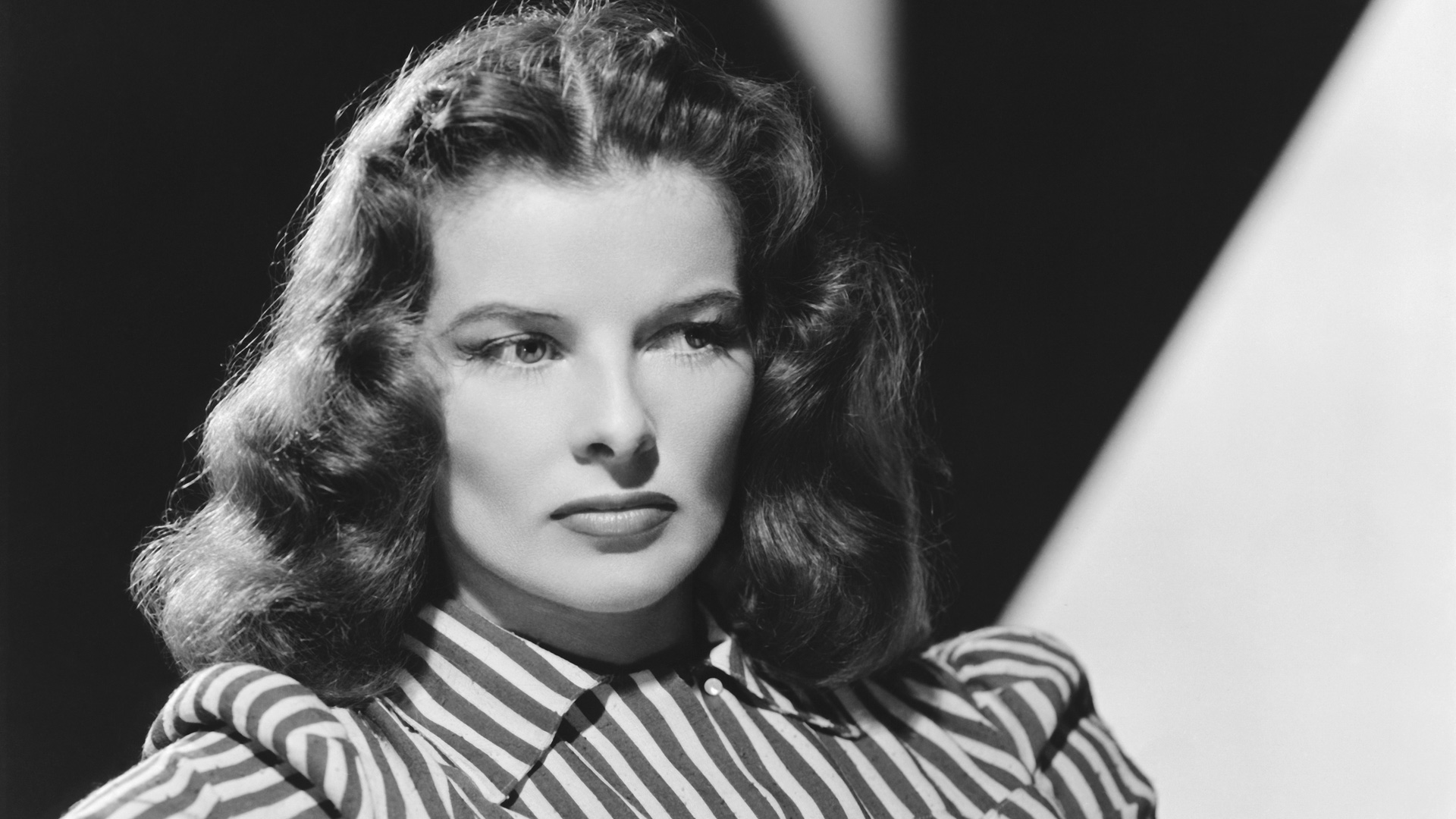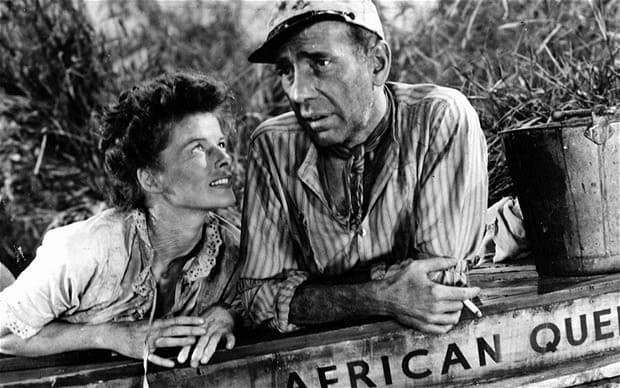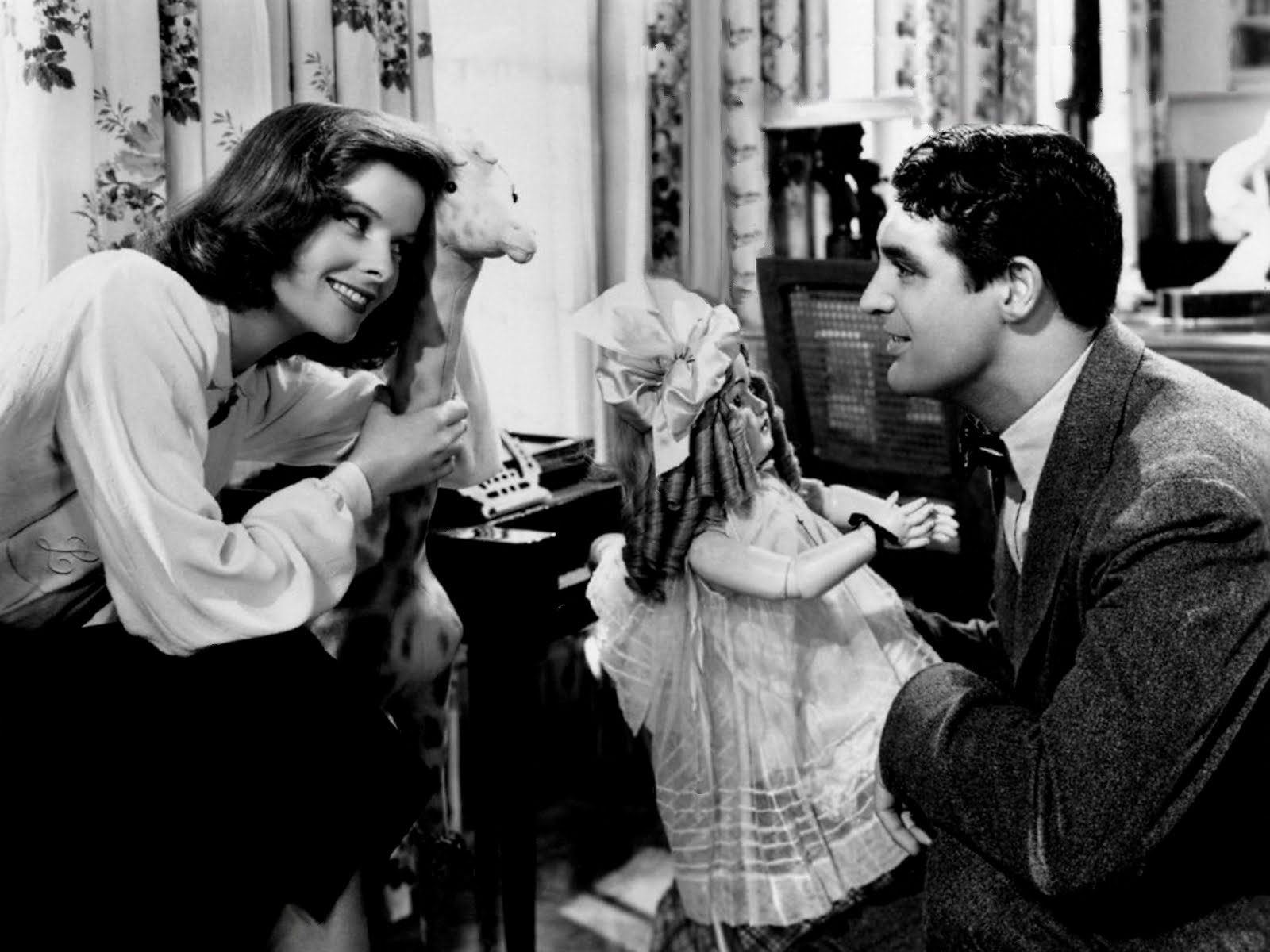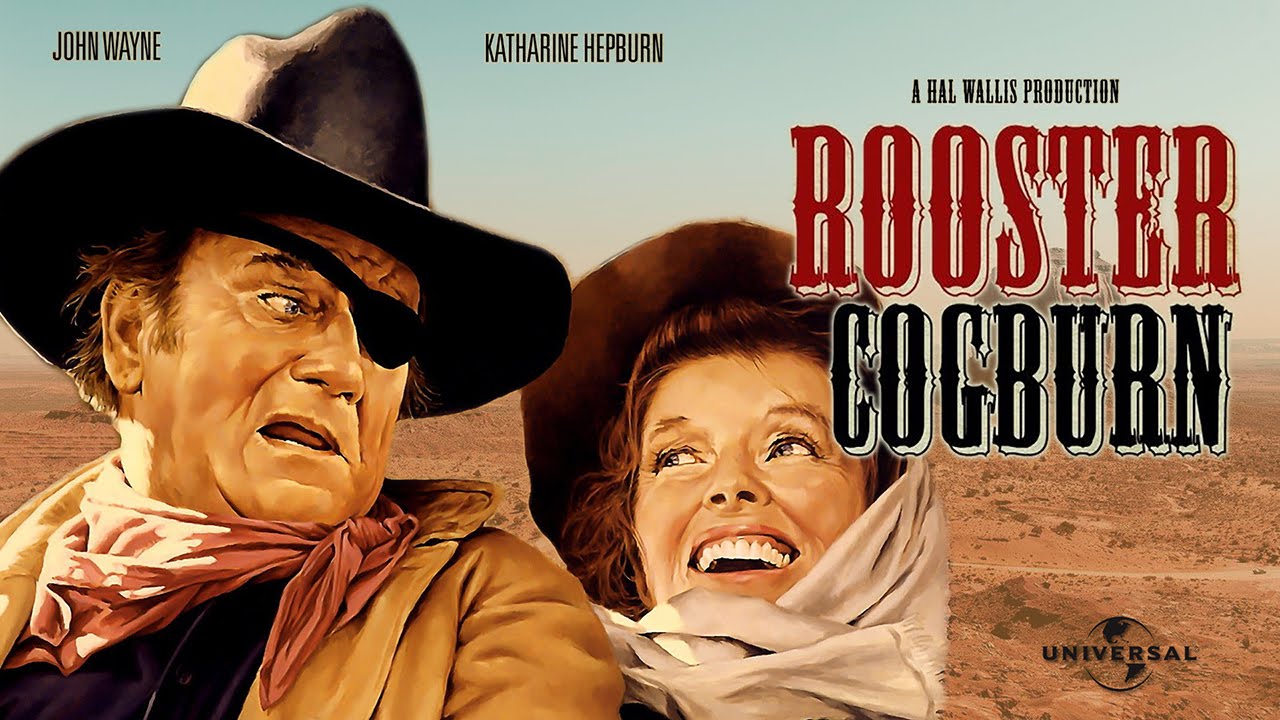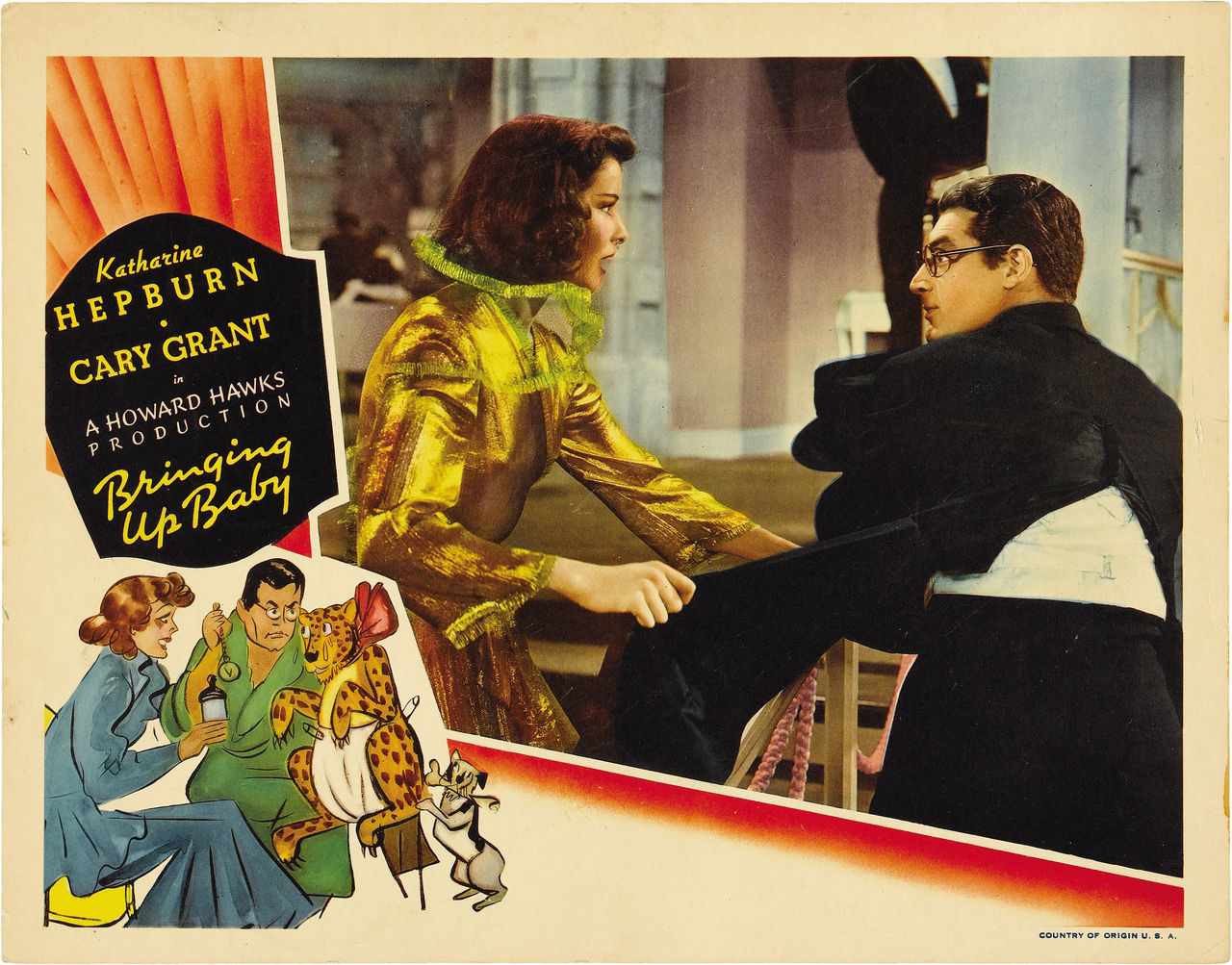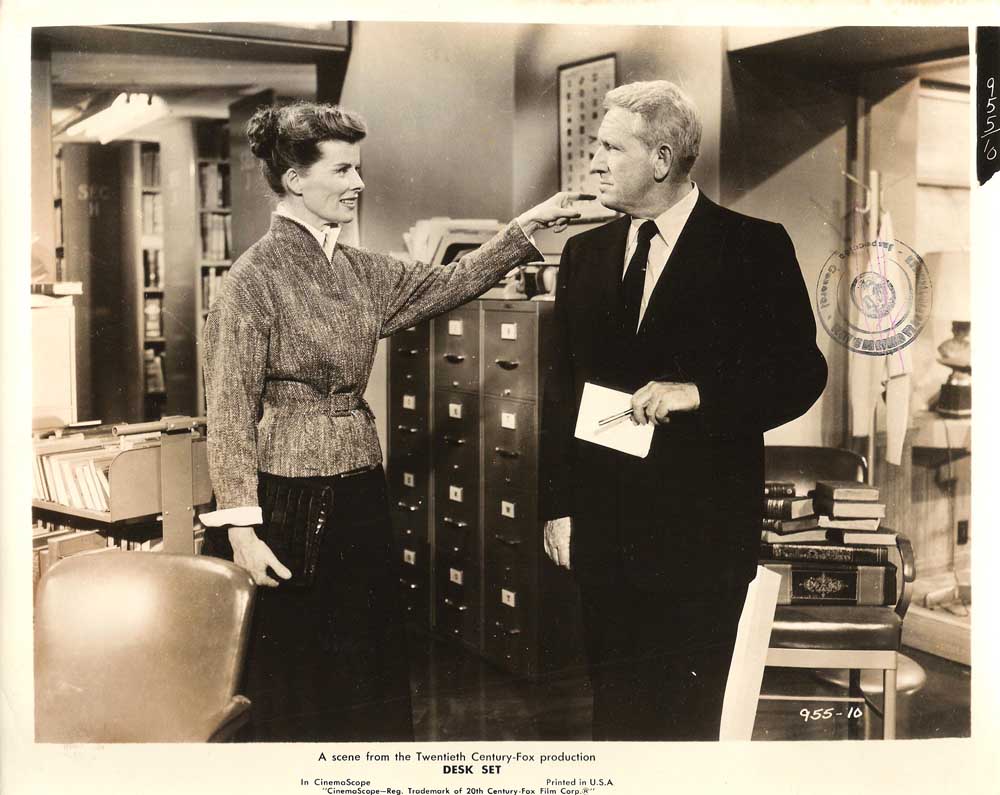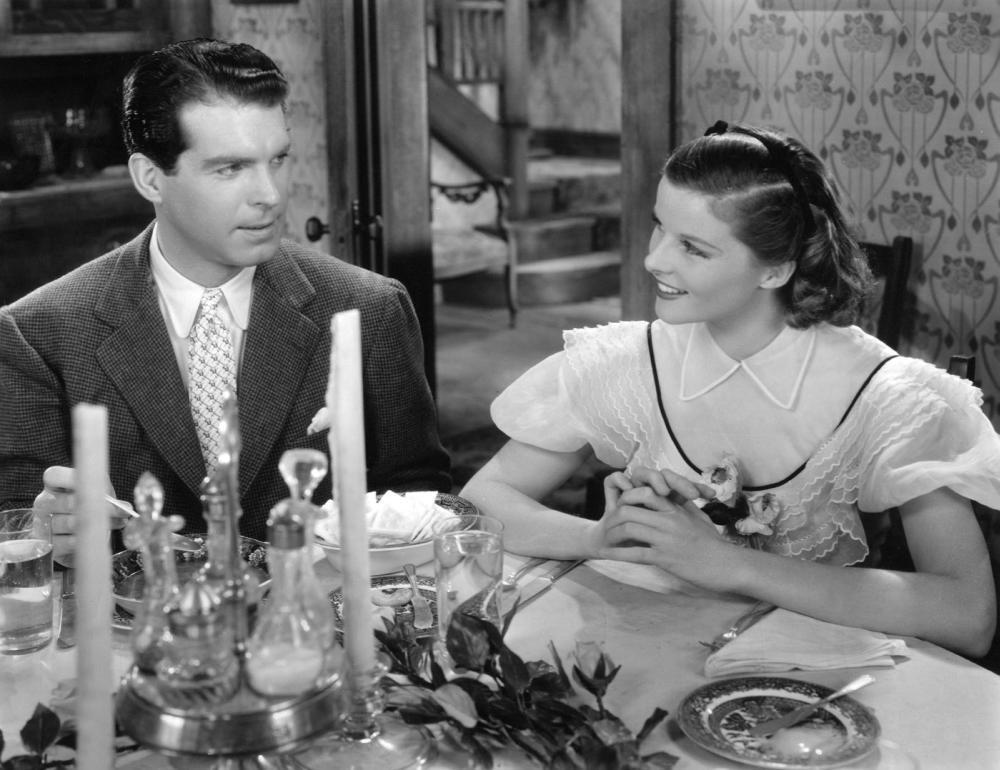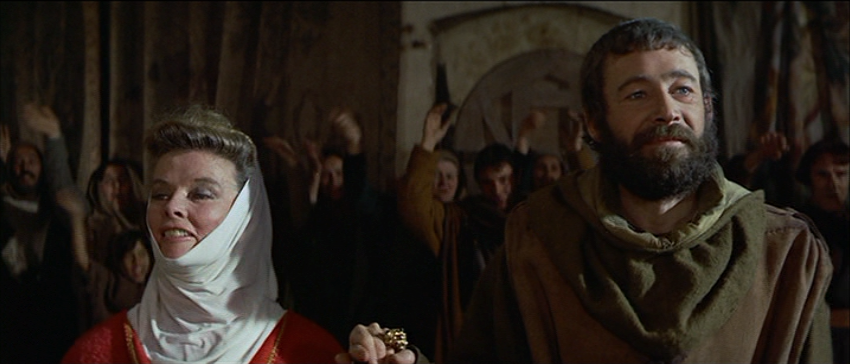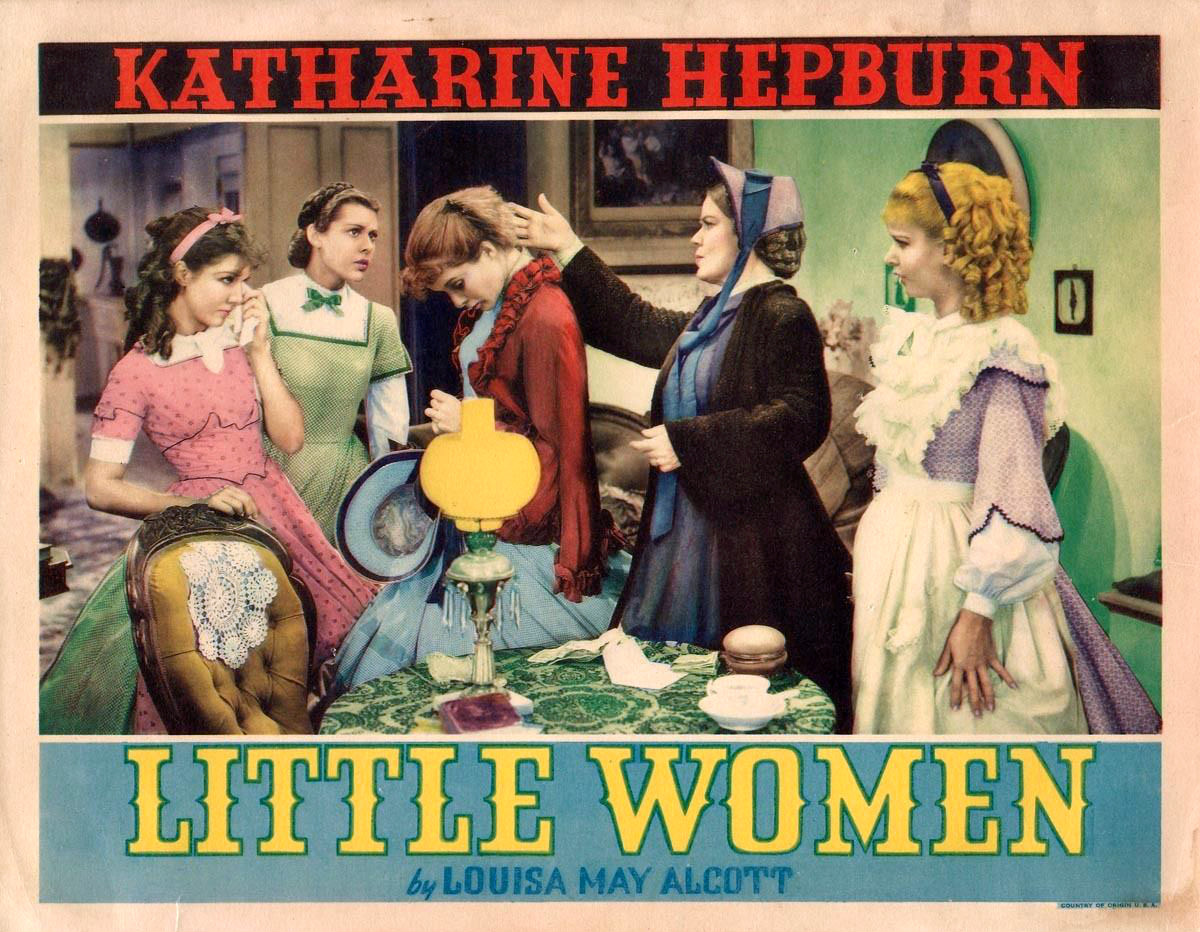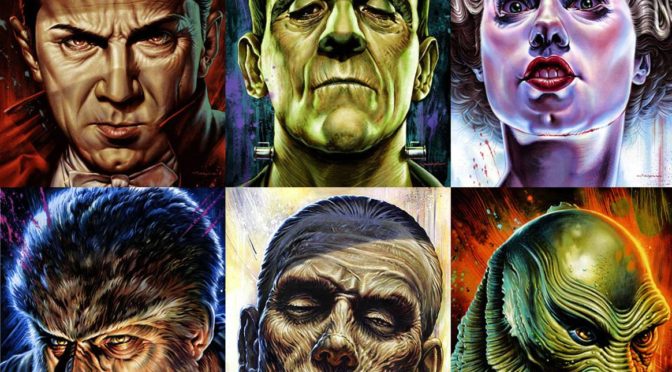Finding just 15 movies to highlight from someone with a career like Katharine Hepburns is just literally insane…as she has well over 15 movies worth highlighting. She’s amazing, and quite possibly my favorite actress. So I’ve narrowed the list down the only which way I could…I simply list my favorites. All of her films are worth watching, but if you’ve never seen any of them yet, here’s a good start:
David Lean is famous for his grand epics, but it’s fun to highlight an intimate film like this for both Katharine Hepburn and David Lean. Katharine Hepburn was more than impressed with her experience working with David Lean. She even asked to sit in on the editing sessions with him to watch him at work. In her autobiography, she wrote, “[Summertime] was told with great simplicity in the streets, in the Piazza San Marco. We would shoot in tiny streets only a few feet wide. The sun would come and go in a matter of minutes. It was a very emotional part, and I tell you I had to be on my toes to give David enough of what he wanted practically on call. But it was thrilling… He seemed to me to simply absorb Venice. It was his. He had a real photographic gift. He thought in a descriptive way. His shots tell the story. He was capable of a sort of super concentration. It made a very deep and definite impression on me, and he was one of the most interesting directors I ever worked with. Wasn’t I lucky to work with him?”
This material is well within Hepburn’s wheelhouse but is very different for Lean. What I find to be of great interest with the material is that Hepburn had a great eye for stage plays and especially ones that would make fine transitions over to the big screen. Many of her success came from turning great plays into marvelous movies. The writer is Arthur Laurents who wrote the plays Home of the Brave, Gypsy and West Side Story.
Another play (you’ll find that most of this list started out as plays), but this one is even more interesting, as it’s about the behind-the-scenes drama of actresses trying to make it big on Broadway. Originally, the writer of the stage play, George S. Kaufman, upset and bemused by the way the screenwriters had substantially changed the play, suggested that the title also be changed, to “Screen Door”. The screenplay was considerably altered from the hit stage play. Director Gregory La Cava was particularly gifted working with actresses. For two weeks prior to filming, he had his cast improvise in the boarding house set as if they were actually rooming together, and had a script girl take down all their interchanges. Most of the dialog you hear in the boarding house is extemporaneous ad-libs by the actresses during rehearsals. Just as an example of how much the play had been rewritten, Adolphe Menjou’s character was not in the original stage play at all.
Katharine Hepburn was in discussions to star in the original Broadway stage production of “Stage Door”, but Broadway producer Leland Hayward, reportedly jealous of her deepening friendship with noted film director John Ford, cast his then-girlfriend Margaret Sullavan in the leading role. Hayward and Sullavan married one month after the stage play opened. Margaret Sullavan was considered for the film version but became pregnant with their first child, and the part went to Katharine Hepburn.
13 – Guess Who’s Coming To Dinner (1967)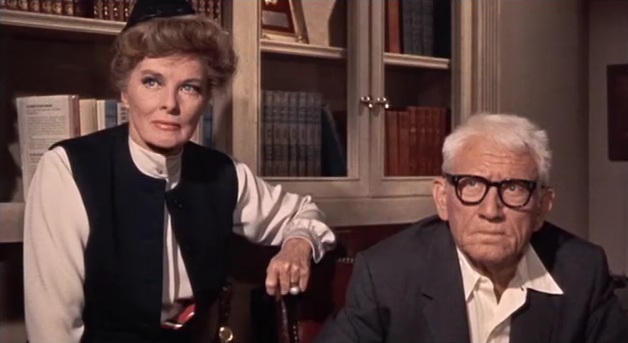
Worth mentioning in this film is one of three of the finest speeches I’ve ever seen written for Spencer Tracy at the end of a film. The others being in State of the Union and Judgment at Nuremberg. Now particularly, in this film during this scene, Katharine Hepburn doesn’t have a single line and yet she speaks VOLUMES. The brilliant decision to have Tracy stand up and then move back to where Hepburn is sitting so that the camera has her in view as he gives the speech about their love, is simply a work of genius. I get choked up every time I see it, as the emotion erupting from both of them is palpable. It’s also important to note that this is their last film together and Tracy’s final film before he died. He would die a few weeks later, and I can’t help but think he was expressing how he really felt about her for all of us to see.
Hepburn would win one of her four Academy Awards from her performance in this movie and it’s not hard to see why, from a single scene where she doesn’t even speak. She’s that good. Ironically, Tracy and Hepburn would do a total of nine movies together but this film was the only one where they were both nominated for Academy Awards, but Tracy would lose out to Rod Steiger, for Heat of the Night, a film also starring Sydney Poitier. Both Tracy and Poitier had won Oscars previously, for other films.
There are two movies on this list where Hepburn is stuck on a raft or a boat going downstream with a gruff character, this one with Humphrey Bogart and Rooster Cogburn with John Wayne. The movie was directed by Bogart favorite, Walter Huston. In both movies, she plays a christian, a missionary in one and the minister’s daughter in the other. She took her part quite seriously in African Queen, according to Katharine Hepburn’s autobiography, John Huston initially found her performance to be too serious-minded. One day, he visited her hut and suggested that she model her performance on Eleanor Roosevelt; putting on her “society smile” in the face of all adversity. After Huston left, Hepburn sat for a moment before deciding, “That is the best piece of direction I have ever heard.” Lauren Bacall famously ventured along for the filming in Africa to be with husband Humphrey Bogart. She played den mother during the trip, making camp and cooking. This also marked the beginning of her life-long friendship with Katharine Hepburn.
11 – State of the Union (1948)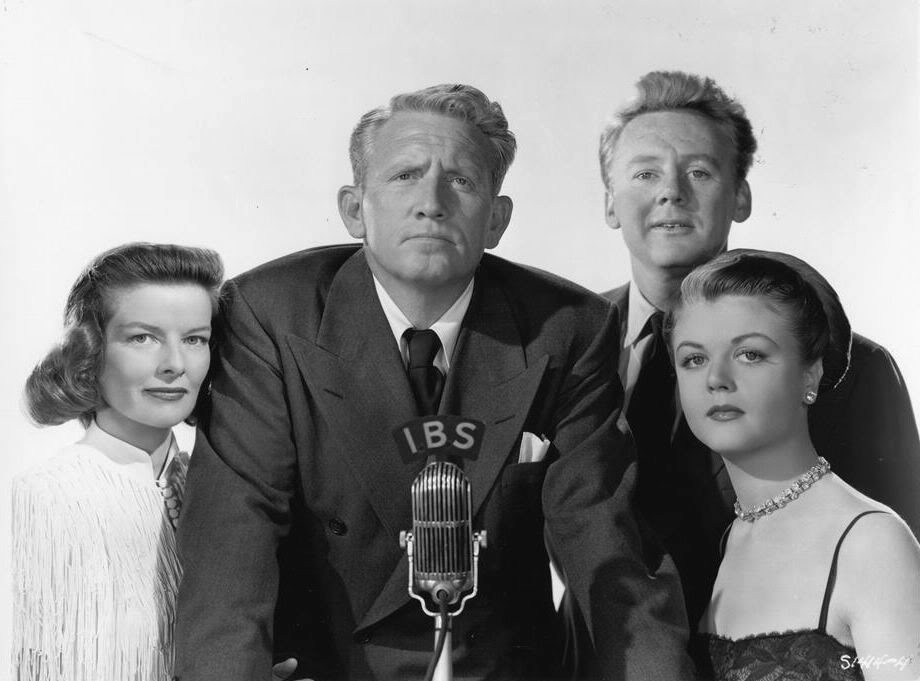
What I love about Katharine Hepburn’s performances most is that she plays some incredibly strong women characters but in vulnerable ways. She lets little cracks come through, we see her characters doubt at times, even as she tries to keep her chin up and fight through. This one is directed by my favorite director, Frank Capra. This was a political film, and pride runs strong with Capra and most of it’s cast, but the country was going through some turmoil over what would be known as the Hollywood Blacklist. There was tension on the set between the strongly conservative Adolphe Menjou and liberal thinking Katharine Hepburn, who had recently made a public speech against America’s anticommunist hysteria and was facing a backlash as a result. Adolphe Menjou was a hard-line political conservative who had willingly co-operated with the House Un-American Activities Committee (HUAC) and named names. Katharine Hepburn was decidedly more liberal and had been an outspoken critic of the blacklist. When Hepburn learned Menjou had worked with HUAC, she refused to speak to or have anything to do with him unless they were filming a scene. Once the cameras were off, she kept her distance. They had previously worked together in two other films (Stage Door and Morning Glory) and had no problems those times. Perhaps the familiarity between the two had caused some deep disappointment in each other’s hard stand.
This is the first of three films on this list with her other frequent collaborator, Cary Grant. They are magic together. I love all the movies she does with Tracy, they seem like the perfect pair, but quite possibly what I love about Hepburn matched up with Grant is that they seemed like the perfect foes. They’re completely at odds with each other but Grant is not quite her equal, she’s a queen he keeps trying to knock off of her pedestal, whereas with Tracy they seem to be equals. This one was written by one of Katharine Hepburn’s favorite writers, Donald Ogden Stewart, who also wrote her other films, The Philadelphia Story, Keeper of the Flame, and uncredited work on Summertime. He was uncredited in many of his later screenplays as he was one of the writers that were eventually blacklisted by the (HUAC) House Un-American Activities Committee.
This is the latest movie on the list, and even though I liked her work in On Golden Pond in 1981, it didn’t quite make the list. This one was a follow-up to John Wayne’s Academy Award winning turn as Rooster Cogburn in True Grit. She enjoyed working with the Duke very much because they were both spitfires! Katharine Hepburn was bemused by co-star John Wayne’s tendency to argue with everybody, especially the director, during filming. At the party to celebrate the last day of filming she told him, “I’m glad I didn’t know you when you had two lungs, you must have been a real bastard. Losing a hip has mellowed me, but you!” The film received terrible reviews on release. Many critics felt that it was too obviously derived from The African Queen, and that both John Wayne and Katharine Hepburn were too old for their parts, but I really love seeing these two veteran actors going head-to-head. John Wayne and Katharine Hepburn were born a mere two weeks apart (Wayne being the eldest), and their careers paralleled each other, yet this film marked the only time the Hollywood veterans appeared together onscreen.
Holiday, Bringing Up Baby and The Philadelphia Story all make my list as well for the Top 15 Cary Grant Movies, you can see the blog post here to see where they wind up on that list. I also talk about this movie in a blog post about What’s Up, Doc?, you can read that one here if you’re interested. Katharine Hepburn and Cary Grant frequently socialized off the set, double-dating with their respective steadies at the time, Howard Hughes and Phyllis Brooks. They loved working on the film so much that they frequently arrived early. Since Howard Hawks was usually late, they spent their time working out new bits of comic business. Hawks and Hepburn started out a little rough at the beginning of shooting. After the bad start, Hawks grew to respect Hepburn tremendously for her comic timing, ad-libbing skills and physical control. He would tell the press, “She has an amazing body – like a boxer. It’s hard for her to make a wrong turn. She’s always in perfect balance. She has that beautiful coordination that allows you to stop and make a turn and never fall off balance. This gives her an amazing sense of timing. I’ve never seen a girl that had that odd rhythm and control.” I talk a little more about this film in a blog post about the Top 15 Films Directed By Howard Hawks.
This one was written by Phoebe Ephron and Henry Ephron, the mother and father of Nora Ephron! Great writing runs in the family! I love this movie as an older couple meet and fall in love. It’s also got some very interesting research details and a fun computer bit. The computer dates the film however because it’s so big and blinky.
6 – Alice Adams (1935)
George Stevens directed Hepburn in Alice Adams and Woman of the Year. Both films make my list but her character is so starkly different! The first one is about a young woman trying to break through certain social circles, very unsure of herself and naive and the second is a very strong reporter trying to make it in a man’s world, very secure and confident. She enjoyed working with him but he really pushed her to be a better version of herself. She was having problems with her public persona, which was of a cold woman. She credits Stevens for her change in the public’s perception, by helping her, in “Alice Adams”, portray more warmth and vulnerability than she had ever shown previously. For example, there was a disagreement among Hepburn and Stevens about the post-party scene. The script called for Hepburn to fall onto the bed and break into sobs, but Stevens wanted her to walk to the window and cry, with the rain falling outside. Hepburn could not produce the tears required, so she asked Stevens if she could do the scene as scripted. Stevens yelled furiously at Hepburn, which did the trick and the scene was filmed Stevens’ way, and Hepburn’s tears are real. I think this scene is dead right the way Stevens has created and set the mood.
Katharine thought very highly of Peter O’Toole. She thought he could do anything, strong but kind, funny but dramatic…she really admired him. Although Hepburn was a great admirer of his work, she had no intention of putting up with the rather bad habits he often exhibited on his productions. “You’re known to be late,” she told him on the first day of work. “I intend for you to be on time. I hear you stay out at night. You’d better be rested in the morning if you’re going to work with me!” O’Toole meekly obliged when she told him “Peter, stop towering over me. Come and sit down and try to look respectable.” O’Toole readily admitted in her presence that she reduced him “to a shadow of my former gay-dog self.” “She is terrifying. It is sheer masochism working with her. She has been sent by some dark fate to nag and torment me.” Her reply: “Don’t be so silly. We are going to get on very well. You are Irish and you make me laugh. In any case, I am on to you and you to me.” In spite of her stern warnings, she enjoyed O’Toole tremendously. She said his vigour and energy helped restore her own vitality at a time when she really needed it.
This film is also the first film for Timothy Dalton and Anthony Hopkins. Timothy Dalton was hugely impressed by Katharine Hepburn, particularly when she came in to shoot reverse shots with him on her day off from filming.
She got the coveted iconic role in this one and runs away with the film. It helped to cement a long relationship with director George Cukor, who would go on to direct her in Sylvia Scarlett, Holiday, The Philadelphia Story, Keeper of the Flame, Pat and Mike, and Adam’s Rib. Katharine Hepburn wrote in her autobiography, “This picture was heaven to do – George Cukor perfect. He really caught the atmosphere. It was to me my youth!” The third screen adaptation of the novel, following silent versions in 1917 and 1918. Little Women would be filmed a total of 8 times for film and several more times as TV shows and a couple mini-series!
This is the first of nine films Hepburn and Tracy would do together. She was unaware of how they would do together onscreen for the first time and wondered if they had the right chemistry. The first scene shot was the characters’ first date, in a bar. Hepburn was so nervous she spilled her drink, but Tracy just handed her a handkerchief and kept going. Hepburn proceeded to clean up the spill as they played the scene. When the drink dripped through to the floor, she tried to throw Tracy off by going under the table, but he stayed in character, with the cameras rolling the entire time. After this she knew the two of them would be golden as they became so comfortable together, she knew it was magic. As Hepburn’s close friend and frequent director, George Cukor was a natural choice to direct, but for her first film with Tracy, Hepburn wanted Tracy to be as comfortable as possible, so as a quasi-producer, she hired George Stevens, who had directed her in Alice Adams. As Hepburn said, “I just thought he (Tracy) should have a big, manly man on his team – someone who could talk about baseball.” Cukor (who was openly gay and known for his friendships with actresses) would later become a good friend of Tracy and would direct both actors in 3 more movies.
2 – The Philadelphia Story (1940)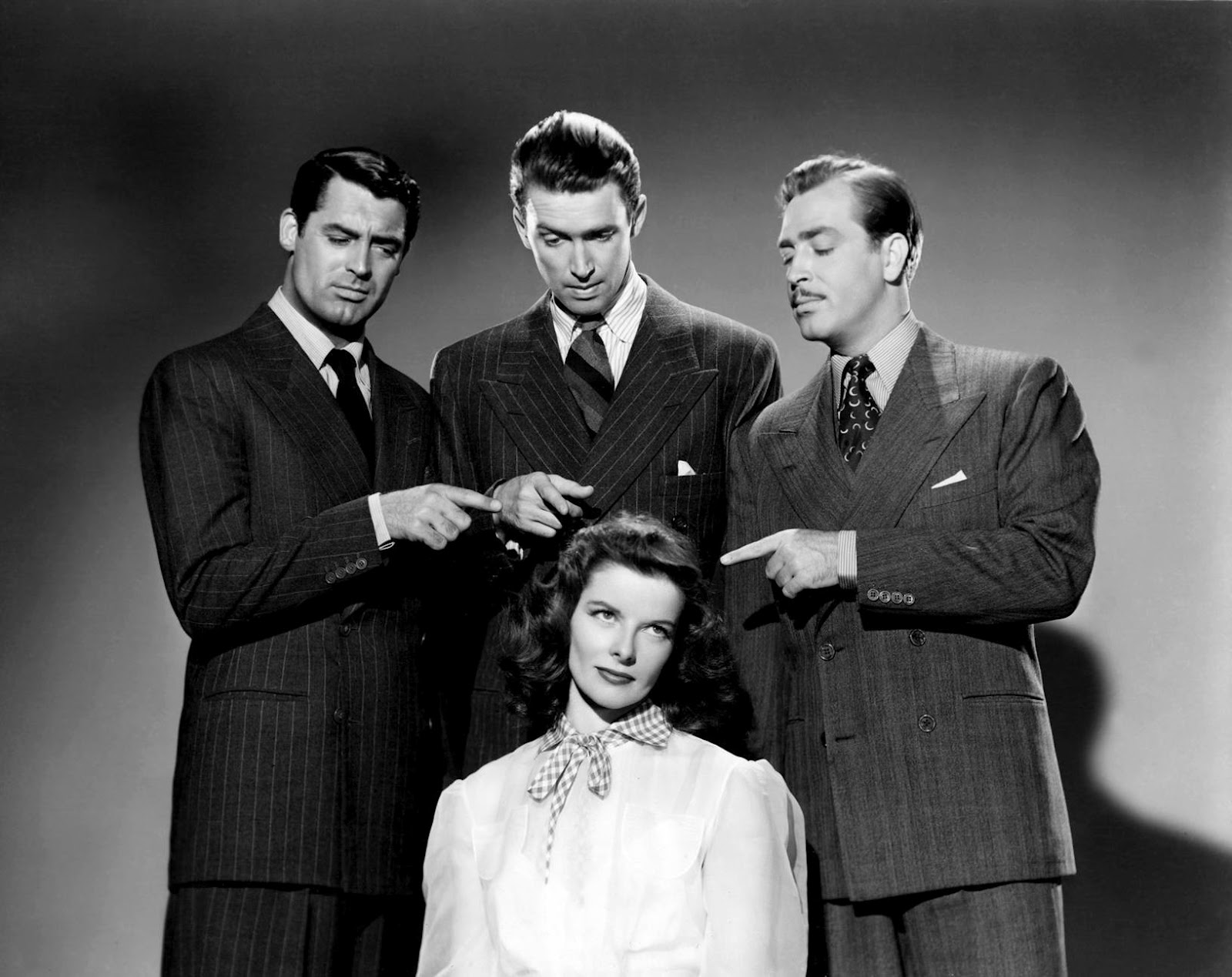
Grant trying to knock Queen Hepburn off her pedestal is never more evident than in this movie. He even calls her a Queen and mocks he high and mightiness, in a marvelous duel of words between exes that were never more in love than when they were fighting. To get back at him she falls off the pedestal for short time and lands in Jimmy Stewart’s arms. James Stewart never felt he deserved the Best Actor Oscar for his performance in this film, especially since he had initially felt miscast. He always maintained that Henry Fonda should have won instead for The Grapes of Wrath (1940), and that the award was probably “deferred payment for my work on Mr. Smith Goes to Washington (1939)”, but I thought he was great in this one as well.
I wrote about how gracious Hepburn was with co-star Judy Holliday in this film, in a blog post you can read here. What I didn’t talk about in that post was how great she is in the movie, on her own right. Written by husband and wife Ruth Gordon and Garson Kanin, they would become lifelong friends of Hepburn and Tracy and Kanin would also go on to write an intimate biography on Hepburn and Tracy.
Interesting bit of trivia, in the memorable Tracy-Hepburn massage scene, a radio plays Frank Sinatra singing Cole Porter’s “Farewell, Amanda,” a gift to Amanda Bonner (played by Hepburn) from her songwriter-neighbor, Kip Lurie (played by David Wayne) who, earlier in the picture, had crooned the ditty, accompanying himself on the Bonners’ piano. While Adam Bonner (played by Tracy) is massaging his wife, he abruptly shuts off the radio. Sinatra is again heard when a record is accidentally started in a later scene. This prerecording of “Farewell, Amanda” is lost.

